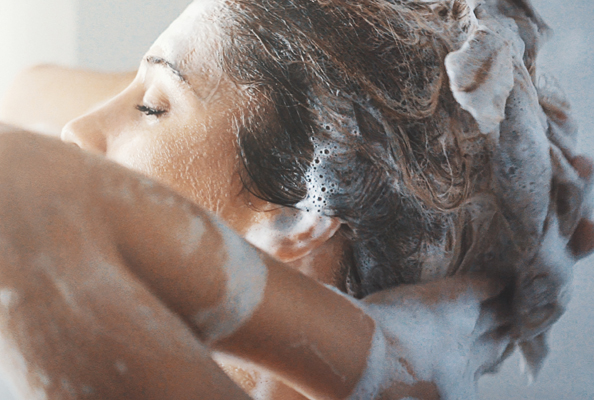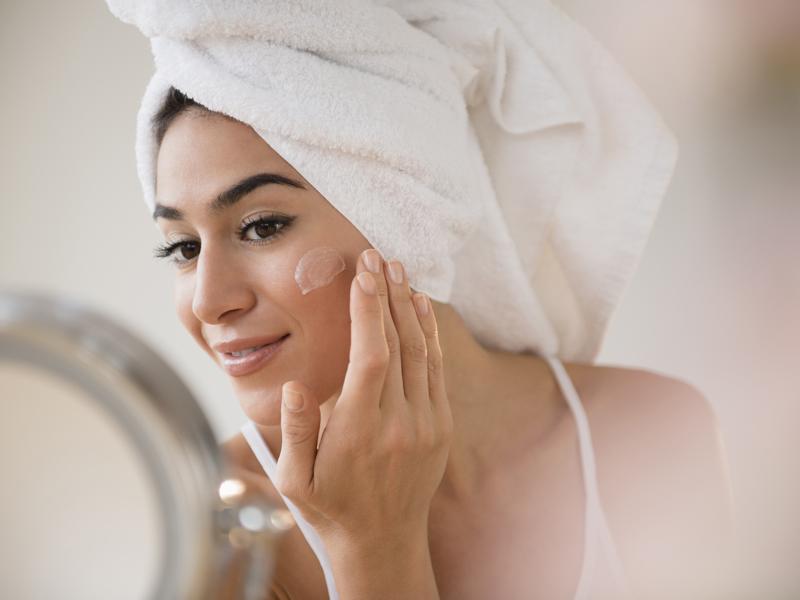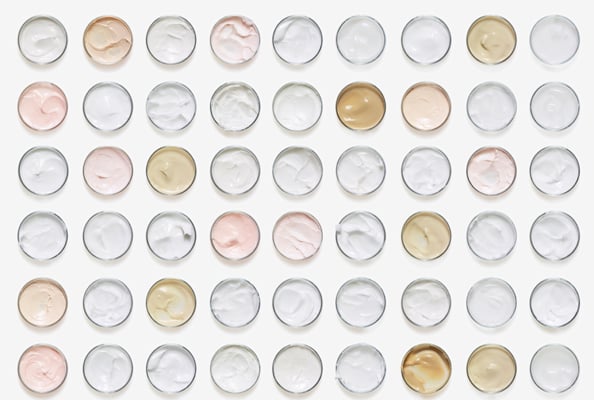Difficult to pronounce and even more difficult to decipher, the labels on your day-to-day products could be hiding a wealth of scary secrets. We consult the experts and set about decoding your daily regimen…
So, you eat organic, buy eco-detergent and try to avoid toxins wherever you can. But if your bathroom cabinet looks like that of the average family, the chances are it’s hiding a wealth of chemicals you’d rather avoid.
Eliminating toxins in our homes is a minefield at the best of times, and the problem is exacerbated here in the UAE, where the products we’re buying are imported from so many different countries that understanding what they can contain is near impossible – what is banned in Europe may well not be in the USA, for example.
“For years, our most trusted brands have contained harmful ingredients, which are only now coming to light,” explains Gemma O’Dwyer, brand manager for UAE-based natural beauty e-store Beautiful Brands.
“In recent years, research has uncovered more dangers, but the truth is the beauty industry is a multimillion-dollar business and to uncover these alarming ingredients can damage a company’s reputation overnight. The good news is that we are starting to see more and more ethical brands eliminating these ingredients from their products, but until regulations are tightened, we are still exposed to the risk of finding these in our everyday products.”
Read:
This Is How To Keep Your Skin In Tip-Top Condition During Ramadan
There’s A Secret Symbol On Your Makeup You’ve Probably Never Noticed Before
That said, knowing that there could be potentially questionable ingredients in even the most day-to-day family products is one thing, learning how to decipher the labels is another thing entirely. Some basic rules can make a big difference – if you can’t pronounce it, it’s likely a chemical, so do your research before buying.
Know that ingredients are listed in order of highest concentration, so while a product might claim to be ‘natural’, if natural oils are listed behind a host of chemical ingredients, it’s likely the natural ingredients aren’t very active. There is no international standard for what can be branded ‘natural’ or ‘organic’ in beauty either, so brand research is critical.
To make things easier, we pulled together a panel of natural beauty experts to point us in the right direction, highlighting the key ingredients you might want to try eradicating from your family bathroom.
Gemma and her colleague, Beautiful Brand’s founder Anna van Rosendveldt, pharmacist Samina Ghori, managing partner Lucrae General Trading LLC, and Aly Rahimtoola, founder of Herbal Essentials, each cast their eye over a range of our most commonly used beauty products and gave us a rundown of the nasties they’ve binned from their households. The results might surprise you…
Shampoo

1. What does it say on the bottle? Sodium laureth sulphate/SLS/SLES.
What is it? Sodium laureth sulphate is a type of detergent used in all manner of cleaning products, from your shampoo to the cleaner you use on your garage floor.
What does it do? It’s a lathering agent, used to create the foamy bubbles we’ve come to expect from shampoos. It’s the lack of SLS that means organic shampoos create far fewer bubbles.
Should you avoid it? Our experts say yes. “The US Environmental Protection Agency recognises it is a potential carcinogenic,” explains Amy. While SLS does cut through grease effectively, its potency also means it can cause skin irritation and dry out the hair and scalp.
Where else is it found? In some brands of toothpaste, mouthwash, bodywash and shower gels and soaps, as well as in all manner of household detergents.
2. What does it say on the bottle? Parabens. In specific terms, these can include ethylparaben, methylparaben, propylparaben, butylparaben and isobutylparaben.
What is it? Parabens are a group of chemicals that prevent bacteria growth.
What does it do? Because parabens stop bacteria from multiplying they help extend your product’s shelf life. The more natural a product is, the shorter its use-by period is likely to be.
Should you avoid it? While the medical community is split over whether parabens pose any real risk to health at permitted levels, they are a known allergen and should be avoided in shampoo by anyone with sensitive or reactive skin. “Parabens have been associated with allergic reactions,” explains Samina, “and sometimes when consumers think they are allergic to a specific product, they’re actually reacting to the preservatives”.
Where else is it found? Parabens are used in all manner of beauty products, and are particularly common in deodorant, lotion, lipstick and body scrubs.
Read:
Beat The Summer Heat With Six Hair Defrizzers That Actually Work
9 Of The Best Spa Deals You Can Find In The UAE This Ramadan
3. What does it say on the bottle? Dimethicone, otherwise known as polydimethylsiloxane or PDMS
What is it? A silicone-based polymer or, in layman’s terms, a type of plastic.
What does it do? Used as a smoothing agent, dimethicone is a popular ingredient in shampoo as it makes hair appear smooth, shiny and visibly healthy.
Should you avoid it? Scientifically, silicones are safe, the only real side effects being potential dryness or irritation for those with sensitive skin. It is, however, essentially there to disguise damage and act as a barrier, which is bad news for anyone who wants to keep their tresses in tip-top condition. “What it’s really doing,” summarises Gemma, “is stopping any other ingredient penetrating into the hair’s cortex.”
Where else is it found? Dimethicone is a common ingredient in any beauty product where a smooth finish is desired, from hair and skincare products to primers and foundations.
Moisturiser

1. What does it say on the jar? Phthalates, including dibutyl and diethylhexyl. Sometimes, these are disguised in labelling under the term ‘synthetic fragrance’.
What is it? A type of plastic.
What does it do? In their own right, phthalates improve product texture and flexibility, helping them bond to skin. They are also used as a solvent and fixative in many of the the perfumes used to make creams more appealing.
Should you avoid it? Critics of phthalates point to evidence linking them with a number of reproductive and endocrine disorders, though medical opinion on the extent of the risk varies. It is generally accepted that phthalate exposure should be avoided in children and pregnant women, but the question is whether phthalates can realistically be avoided altogether without new legislation. While certain types of phthalates are already banned in Europe, many beauty products here come from the USA, where the lack of requirement to list fragrance ingredients means they can be hard to dodge unless you also eliminate all synthetic perfumes.
Where else is it found? Phthalates are truly ubiquitous, and can be found across a range of personal care products, as well as in houeshold goods, cleaning products and even food packaging.
2. What does it say on the jar? Parabens. In specific terms, these can include ethylparaben, methylparaben, propylparaben, butylparaben and isobutylparaben.
What is it? Parabens are a group of chemicals that prevent bacteria growth.
What does it do? Because parabens stop bacteria from multiplying, they help extend your product’s shelf life. The more natural a product is, the shorter its use-by period is likely to be.
Should you avoid it? While the medical community is split over whether parabens pose any real risk to health at permitted levels, they are becoming increasingly well recognised as one of those ingredients to avoid if you are trying to reduce your exposure to toxins, given their prevelance across the entire beauty industry. A known allergen, they should definitely be avoided by anyone with sensitive or reactive skin. Further investigation into links between parabens and breast cancer is continuing.
Where else is it found? Parabens are used in all manner of beauty products, and are particularly common in deodorant, lotion, lipstick and body scrubs.
Read:
Bookmark This: Here Are The Best Facial Treatments In Dubai
Bookmark This: Here Are Dubai’s Best Salons & Hair Stylists
3. What does it say on the jar? Hydroquinone.
What is it? A chemical bleaching agent.
What does it do? Effectively, it bleaches the skin, prompting its inclusion in skin whitening and brightening moisturisers, as well as anti-ageing creams targeted at those with brown spots, age spots, freckles and melasma.
Should you avoid it? Yes. There’s no question that hydroquinone is effective on some skin types, but it is also regarded as such a highly toxic ingredient that it is banned in concentrations above one per cent within the EU. In a cosmetic sense, it has been shown to weaken elastin and collagen, and can actually lead to a darkening of the skin in some racial groups. Like many controversial ingredients, it has also been listed as a potential carcinogen, but arguably the biggest risk comes with the fact that some formulations contain trace amounts of mercury, itself associated with a host of health concerns including kidney, eye and brain damage.
Where else is it found? Whilst its most common cosmetic use is in lightening creams, hydroquinone can also be found in some cleansers, anti-ageing creams, hair conditioners and nail products. An unquestionably powerful chemical, it is the key ingredient used in the development of black and white photography.
Makeup compact

1. What does it say on the packaging? Hydrous magnesium silicate.
What is it? Talcum.
What does it do? A naturally occurring mineral substance, talc is used to absorb moisture in powder-based products to maintain their effectiveness. It also helps to smooth the end product and prevent caking, helping to achieve a flawless finish.
Should you avoid it? It depends on its use. While talc in make-up is safe, barring the usual caveats of potential irritation to sensitive skins, in its powdered form it has been linked with lung damage in small children, and in the EU, loose powders containing talc come with a warning to keep away from children’s noses and mouths. There is also some debate about whether some forms of talc contain harmful contaminants, including asbestos.
Where else is it found? While its most common use is in make-up and baby powder, talc can also be found in some moisturisers, body lotions and even feminine hygiene products.
2. What does it say on the packaging? Parabens. In specific terms, these can include ethylparaben, methylparaben, propylparaben, butylparaben and isobutylparaben.
What is it? Parabens are a group of chemicals that prevent bacteria growth.
What does it do? Parabens stop bacteria from multiplying, helping to extend the product’s shelf life. Because bacteria can be a particular issue in cosmetics compacts, where the product is in contact with brushes, puffs or fingers potentially numerous times a day, parabens are particularly common.
Should you avoid it? While the medical community is split over whether parabens pose any real risk to health at permitted levels, they are a known allergen for those with sensitive or reactive skin. There is also increasing concern, warns Anna, “that they could possess oestrogen-mimicking properties that are associated with an increased risk of breast cancer.” As such, repeated exposure to parabens is thought to be of particular concern for women.
Where else is it found? Parabens are used in all manner of beauty products, and are particularly common in deodorant, lotion, lipstick and body scrubs.
Read:
There’s A Secret Dubai Store That Sells Luxury Beauty For A Steal
Is Queen Rania Your Hair Hero? Well, Here’s How To Copy Her Look
3. What does it say on packaging? Polytetrafluoroethylene/PTFE.
What is it? A form of plastic, also known by its brand name Teflon.
What does it do? In the same way as Teflon coats a frying pan, PTFE coats the face, creating a smooth and flawless-looking finish and smoothing fine lines and wrinkles.
Should you avoid it? While often mistakenly thought of as a toxic ingredient, PTFE only becomes toxic at very high temperatures, so should not itself be of concern in beauty products. In fact, it is in common use in medicine, where the fact humans rarely reject it makes it very useful. There are, however, worries that some forms of PTFE are “contaminated with PFOA”, warns Gemma. “This is a carcinogenic ingredient.” In this sense, those who want to keep their beauty regime as pure as possible might prefer to avoid it.
Where else is it found? While its primary cosmetic use is in powder-based products, such as blusher and eyeshadow, Teflon is also used in some brands of mascara, shaving gel and lip balm. In the home, in addition to its use in non-stick cookware, it is also used to make carpets and fabric stain-resistant.
Shower gel

1. What does it say on the bottle? Sodium laureth sulphate/SLS/SLES.
What is it? Sodium laureth sulphate is a type of detergent used in all manner of soaps, detergents and household cleaning products, as well as shower gel.
What does it do? It’s a lathering agent and is used to create the foamy bubbles we associate with effective cleaning properties in our shower gels. Like in shampoo, it’s the lack of SLS that means many organic shower gels and body washes create far fewer bubbles.
Should you avoid it? “While the bubbles feel like they’re cleansing the body, in truth, they are drying out your skin,” warns Gemma, “aggravating skin conditions such as excessive dryness, sensitivity, eczema and psoriasis.” They have also been noted as a potential carcinogen by agencies including the US Environmental Protection Agency.
Where else is it found? In some brands of toothpaste, mouthwash, shampoo and soap. You’ll also likely spot it in the ingredients of many of your household cleaning agents.
2. What does it say on the bottle? Dioxane.
What is it? Part of the PEG (polyethyleneglycol) family, it’s another form of lathering agent.
What does it do? Like SLS, dioxane is used to create suds and gives the illusion of cleaning effectiveness.
Should you avoid it? In a word, yes. “Dioxane is one of the chemicals that was used in Agent Orange during the Vietnam war and is a known carcinogen that is toxic to the brain, central nervous system, liver and kidneys,” warns Anna. In fact, while the US Environmental Protection Agency and Department of Health and Human Services have both confirmed links between dioxane and cancer, the FDA, the country’s cosmetics regulator, is yet to issue an outright ban. Concern is such that two US senators are currently petitioning the FDA to outlaw it in all personal care products.
Where else is it found? One recent study by an American non-profit suggested dioxane is present in 46 per cent of personal care items in the USA, including foaming hand soaps, lotions and even baby products. As it binds to water and doesn’t break down, it can also now be detected in some countries’ water supplies.
Read:
8 Of The Best Asian Beauty Products You Can Find In The UAE
8 Beauty Hacks You Need To Know When The Summer Heat Hits
3. What does it say on the bottle? Triclosan.
What is it? A type of pesticide with antibacterial properties.
What does it do? First introduced in a hospital setting in 1972 before spreading to the mass market, triclosan is present in soaps and body washes as it helps to get rid of bacteria built up on your skin.
Should you avoid it? There’s no question that some people love the idea of their shower gel being antibacterial. However, there is some debate over whether it is our reliance on triclosan and other sanitising chemicals that is contributing to the growing global problem of antibiotic resistance. Triclosan has also been linked with endocrine and thyroid function disorders and, in 2015, the European Chemicals Agency recommended its use be phased out across the continent due to the recognised risk of repeated use.
Where else is it found? Triclosan is common in products that boast of antibacterial properties, such as hand soaps and sanitisers, deodorants and toothpastes, as well as some fabrics, household objects and even toys.
For more about food, ideas, value and life in the UAE, follow Good magazine on Facebook.
This article was originally published in Good magazine
Images: Supplied












